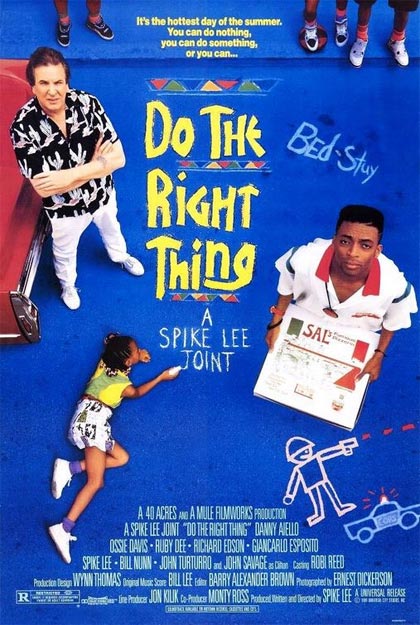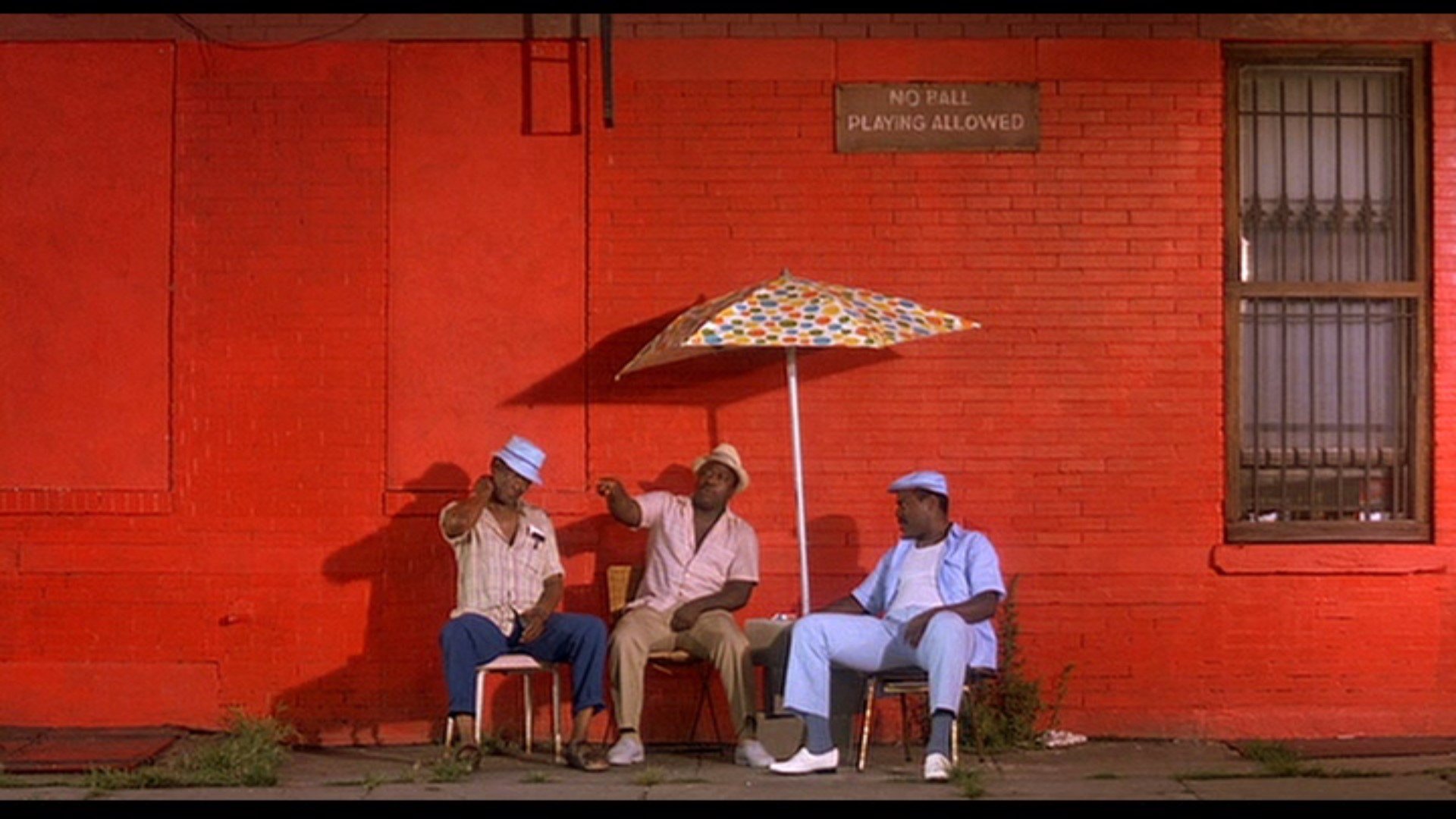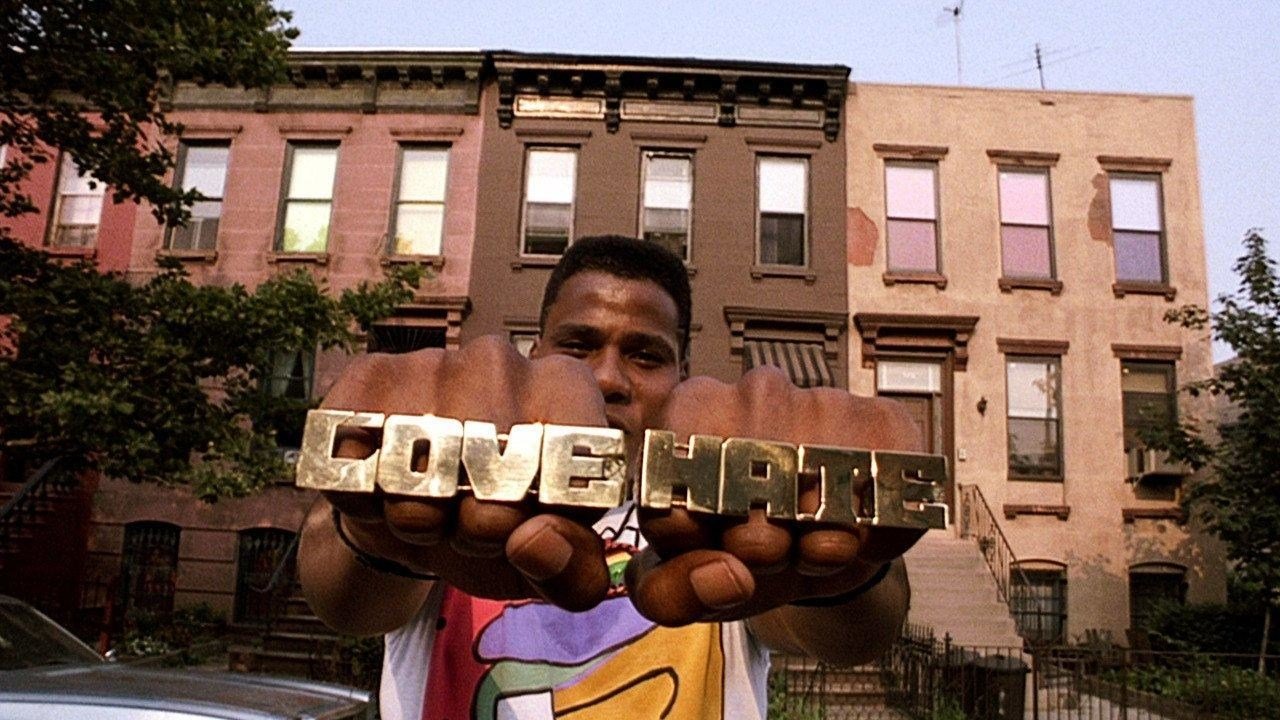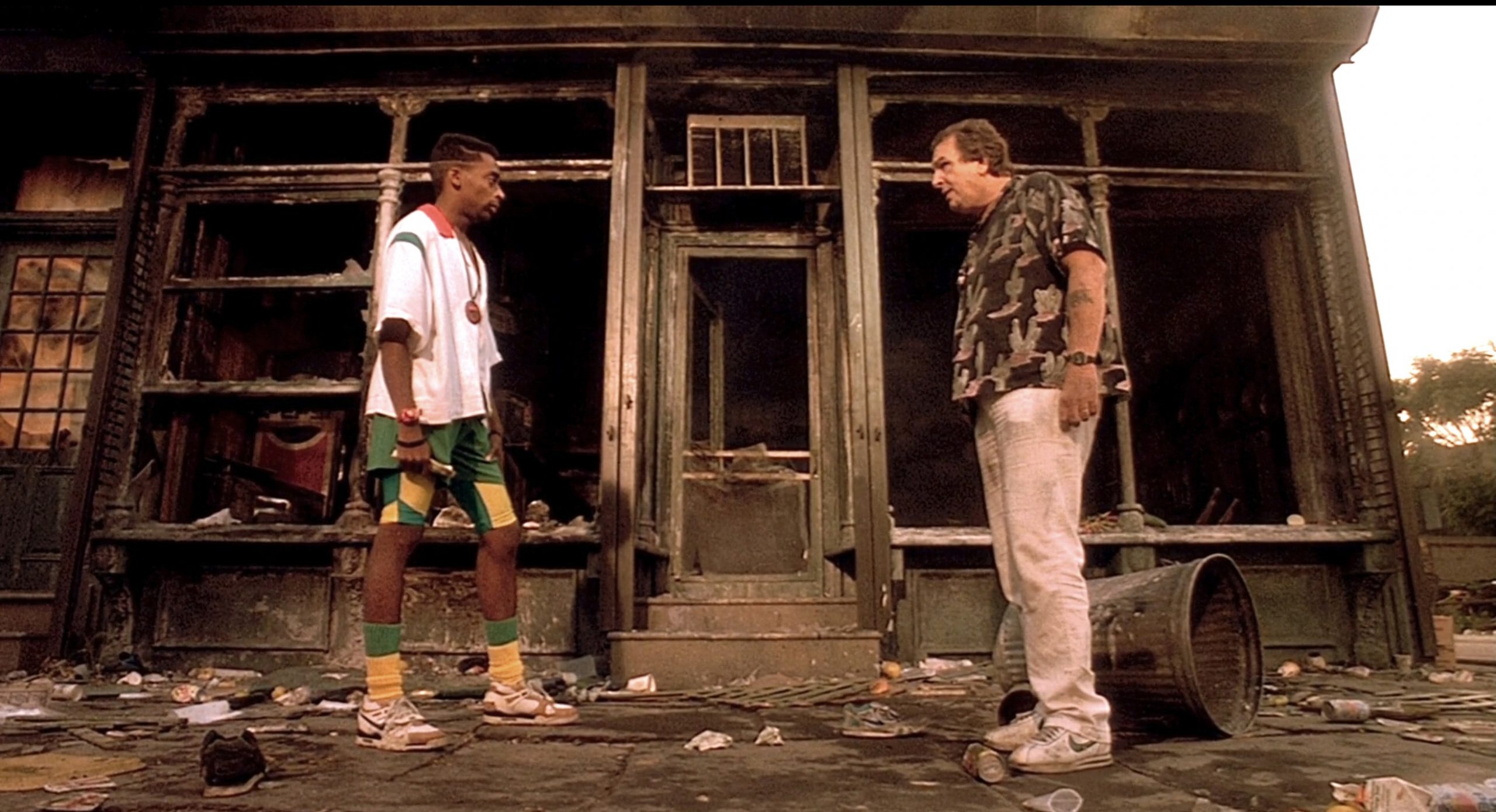Hi, I’m Enrico Ledda and today I want to talk about a movie: Do The Right Thing, Spike Lee’s IV movie, filmed in 1989 and set in the New York suburbs.

Do the right thing
We follow the characters through the small fragments of everyday life during a single hot day, and see the growing tensions between various ethnic groups that inhabit a prevalently African-American Brooklyn neighbourhood. A context in which multiculturality – a characteristic of US society – has become a generalised “everyone against everyone” due to poverty and marginalisation. Conflicts and mutual insults involving every social and ethnic group, a picture in which the afro American population, though the majority, seems alienated and resigned while white police patrols watch over, menacing.
Spike Lee’s style emphasises the increase in social tensions through continuous close-ups and slanted frames, the photography favours primary colours with the colour red dominating the scenes, the heat becomes a tangible element, also thanks to the emphasis of sweat on the characters’ bodies.

Do the right thing, 1989
The reference point within the narrative is the main character Mookie, played by the director himself, a lazy and seemingly submissive bellboy who works at the Pizzeria Da Sal. It is precisely in this restaurant where the most heated controversy takes place, when Buggin’ Out – a youngster of the neighbourhood with a markedly polemic personality – asks that on the wall of the pizzeria, covered with photos of celebrities of Italo American origin, be included also photographs of afro American people, considering that most of the restaurant’s clientele is afro American. Sal’s categorical rejection is followed by Buggin’ Out’s boycott, which is unsuccessful until Radio Raheem also gets involved in the dispute. Radio Raheem is a big, silent and angry looking guy, who runs around the neighbourhood carrying a huge stereo system always playing the same same song: “Fight the Power” by Public Enemy.
Up to this point, Radio Raheem’s character within the film has been rather enigmatic; we hear him quote the monologue on Love and Hate by Robert Mitchum from Death Runs on the River when he talks to Mookie, wondering from block to block and forcing everyone to listen to his favourite piece. We can guess his intent was not so much prevaricating as it was provocative: the lyrics of the song invite African Americans to emancipate themselves and reject the icons of white culture. Radio Raheem seems to want to draw the attention of his companions and push them to rebel against the constituted power, acting as a disturber and bringing to light the dormant tensions of everyday life. When Sal, in his rage, destroys the stereo with a baseball bat we reach the most tragic moment of the film. Radio Raheem jumps on Sal and a brawl ensues that spills out of the pizzeria and forces police to intervene. Once the two are separated, one of the policemen immobilises Radio Raheem and pounds on him with a tight grip around his neck, suffocating him in front of everyone present.

Radio Rahem | Do the right thing
At this point the agents hurry to load the body of the young man on one of the patrol cars and escape the scene of the crime, leaving the crowd shaken in front of the pizzeria. The situation is tense: the crowd’s discomfort turns into anger towards Sal and his children. It is in this moment that Mookie abandons his usual passivity and enters into action. He empties a trash can screaming “Hate”, and throws it at the window, starting off a riot that results in the destructing of the restaurant.
Mookie’s angry reaction reflects the main subject the film, also it’s title, which is: what is the right thing to do when faced with such acts of oppression. Two different approaches are recurrent throughout the film, embodied in the figures of Martin Luther King and Malcom X, the first refuting the use of violence and the second allowing it as a means of self defence. The director seems to lean towards the latter approach, although the decision to end the film with an image of the two leaders shaking hands suggests an idea of balance, admitting the validity of both points of view. Mookie’s gesture shows how sometimes it’s hard to just let things slide, and how racism and social inequalities make peaceful coexistence with a community a mirage. Quoting Sal’s words to Mookie, “Why the hell are you talking about freedom? … I’m the boss here, nothing is freedom, I’m the only one in charge here”, we can see how the pizzeria becomes a metaphor for the neighbourhood and the state of oppression afro American people live in a country, seemingly free, but in reality where their life has no value.

Mookie e Sal
Although the movie referred to previous events, including the Harlem riots of the 1980s, it seemed almost prophetic after the 1992 Los Angeles riots, which lasted six days and were a response to the acquittal of the four agents involved in the beating of Rodney King. Do The Right Thing seems condemned to remain relevant after the assassination of George Floyd, the riots that followed and the expansion of the Black Lives Matter Movement. This renewed relevance is unfortunately a constant reminder that history is repeating itself, and that the situation has not changed over the years. The question posed by the film remains open: “Will we ever live together?”
Read other WWW+ on ZìrArtmag
Translated by Ludovica Sarti
